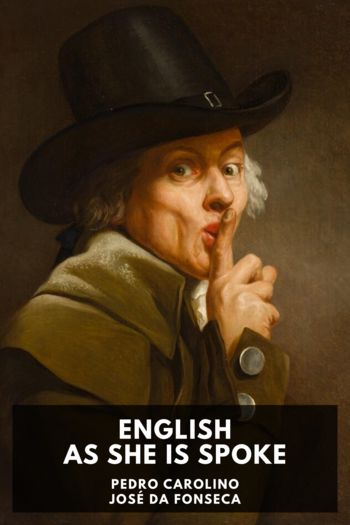Pablo de Segovia, the Spanish Sharper, Francisco de Quevedo [primary phonics .txt] 📗

- Author: Francisco de Quevedo
Book online «Pablo de Segovia, the Spanish Sharper, Francisco de Quevedo [primary phonics .txt] 📗». Author Francisco de Quevedo
Of the picaresque stories, Lazarillo de Tormes, though imperfect and without a proper conclusion, must still be regarded as the first in merit as it was the first in time. It has been the model for all its numerous successors, just as the Amadis of Gaul of the previous fashion had been the model for the romances of chivalry. For gaiety of humour, the easy and natural tone of life and simplicity of colouring, it has been held in great favour ever since its appearance; by no one relished more than by the author of Don Quixote. The next in date was Guzman de Alfarache, by Mateo Alemán, a native of Seville, of which the first part was published in 1599. This, though almost as popular as its predecessor, and even more frequently reprinted and translated, has been much overpraised. It is, in truth, a somewhat arid and tedious performance, written in a poor style. The hero is less interesting than his class, for he is not only a rogue but a hypocrite, who pretends to deceive himself as much as he deceives others, and aspires to be good and pious, which makes him less picturesque and more immoral than if he were a picaro proper and true. Next to follow in that line was the Picara Justina, published in 1605, the work of a Dominican whose real name was Andrés Pérez. For the better prevention of scandal, Father Pérez, being likewise the author of diverse devotional books, assumed the name of López de Ubeda. Justina has nothing to recommend her, not even her viciousness. She is false, affected, and silly, and worthy to end, as she does, by becoming the wife of Guzman de Alfarache. The book is perhaps the worst of its class, in art as in ethics, being made additionally nauseous by the moral warnings and tags of virtuous sentiment with which the chapters conclude. Perhaps anterior to both Guzman de Alfarache and Picara Justina, though not published till 1613, were Cervantes’ two sketches of picaresque life, Rinconete y Cortadillo and Los Perros de Mahudes, the scene of which is laid in the Triana, the suburb of Seville, then, as now, the favourite home and headquarters of the picaresque gentry. There is internal evidence to show that both these stories, which are clearly drawn from real life and actual experience, were written before the death of Philip II, in 1598. Cervantes resided at Seville with his family between 1588 and 1598, and there is little doubt that the picture he draws of Seville low life is of this period. Rinconete y Cortadillo, in all the qualities of the higher art, must be placed at the head of this species of literature. Although only a sketch, it is brimful of humour, wit, and life, drawn with the same delicate and masterly hand which has given us Don Quixote. What is admirable in the picture is the skill with which a repulsive subject is treated, so that, while preserving all its truth, it is redeemed from grossness. There is not a word which is offensive to taste; yet the thieves, the bullies, the bona robas, and the other delightful but most improper people, move and breathe and talk as “full of life as if they lived indeed.” In others of his books, Cervantes has shown his wide and profound knowledge—doubtless born of actual experience—of this lower order of humanity, as in his Rufian Dichoso, the Fortunate Bully, and in some of his plays and interludes.
It is needless to follow in detail the history of the later experiments in the gusto picaresco. As we approach later times the stories become duller and more respectable. The Marcos de Obregon of Vicente Espinel appeared in 1618. It is a story of adventure abroad rather than of low life at home, not wanting in spirit, and with a more regular construction than most stories of this class, from which Le Sage has stolen very largely and boldly in his Gil Blas, even appropriating the name of the hero, and giving it to one of his characters. In 1624 came another of the picaresque brood, called Alonso, Mozo de Muchos Amos (Alonso, Servant of Many Masters), by one Yanez y Rivera, which deals with the humours of domestic service. We need not occupy ourselves with the long string of lesser





Comments (0)